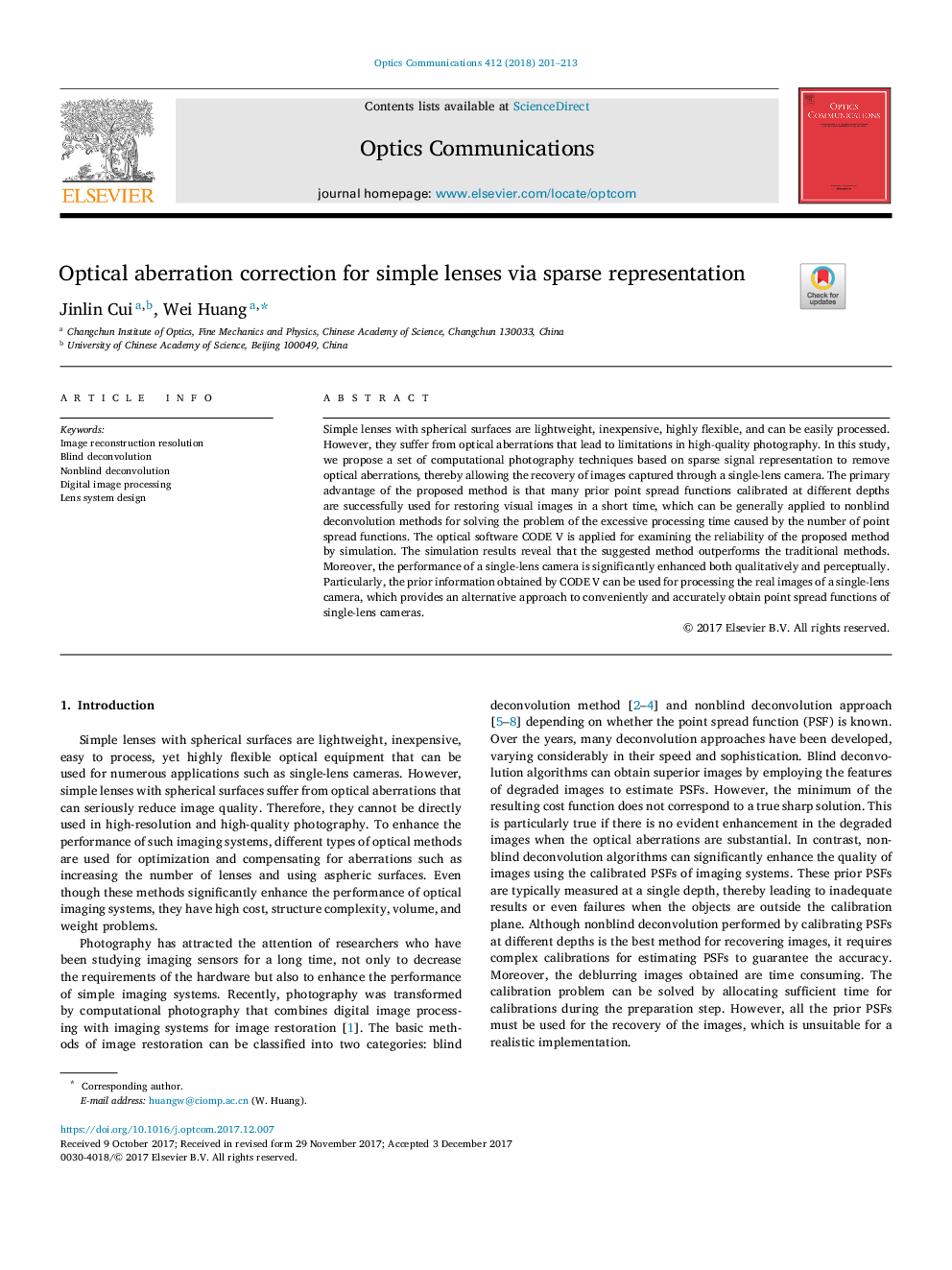| Article ID | Journal | Published Year | Pages | File Type |
|---|---|---|---|---|
| 7925840 | Optics Communications | 2018 | 13 Pages |
Abstract
Simple lenses with spherical surfaces are lightweight, inexpensive, highly flexible, and can be easily processed. However, they suffer from optical aberrations that lead to limitations in high-quality photography. In this study, we propose a set of computational photography techniques based on sparse signal representation to remove optical aberrations, thereby allowing the recovery of images captured through a single-lens camera. The primary advantage of the proposed method is that many prior point spread functions calibrated at different depths are successfully used for restoring visual images in a short time, which can be generally applied to nonblind deconvolution methods for solving the problem of the excessive processing time caused by the number of point spread functions. The optical software CODE V is applied for examining the reliability of the proposed method by simulation. The simulation results reveal that the suggested method outperforms the traditional methods. Moreover, the performance of a single-lens camera is significantly enhanced both qualitatively and perceptually. Particularly, the prior information obtained by CODE V can be used for processing the real images of a single-lens camera, which provides an alternative approach to conveniently and accurately obtain point spread functions of single-lens cameras.
Related Topics
Physical Sciences and Engineering
Materials Science
Electronic, Optical and Magnetic Materials
Authors
Jinlin Cui, Wei Huang,
